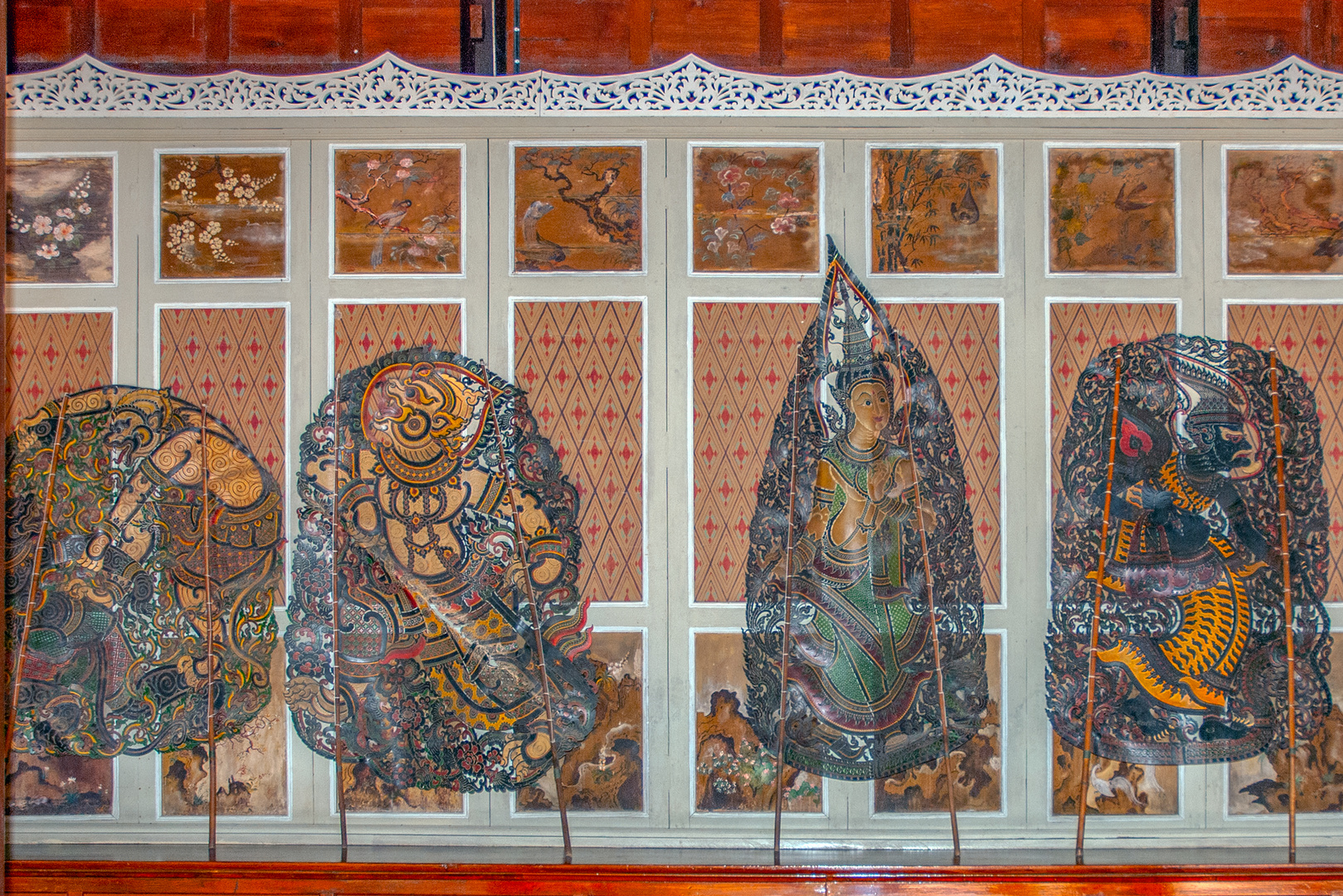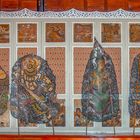Nang Yai puppets
Nang means leather and yai means large – a reference to the puppets that allowed for the shadows. Unlike many puppet performances around the world, Nang Yai relies mainly on only the shadow of the puppets.
Puppeteers – moving and dancing men – hold up large, intricate leather carvings of characters in front of an illuminated screen, creating a silouhette of colors and shadows for the audience to see. The puppeteers move their curlicued toes and delicate feet according to the music and narrative cues, often times gliding or jumping in controlled, suspended forms. They often play out scenes from the locally and regionally well-known epic, Ramayana, known to most Thais as Ramakien. More seldomly, a Nang Yai performance might also be the stories of locally composed stories – Samutkotr Khamchan and Anirut Khamchan, for instance. These were lyrical poems composed under the command of King Narai in the Ayutthaya period, during which Nang Yai was considered haute performance, and therefore common in the domains of royalty and aristocrats only.
The origin of Nang Yai in Thailand is not yet clear. However, considering its strong relationship with the Ramayana, a Hindu epic, it is believed that the performance was influenced by Indian culture.
The picture was taken in the Mueang Boran Ancient City museum Samut Prakan outside Bangkok















Herbert Rulf 21/12/2023 23:28
Sehr schön sind die. Ich habe auch eine, ganz dünn geklopftes Rinderleder, so dünn wie Papier und natürlich Handarbeit. Man traut sich kaum sie anzufassen. Ob sie alt ist weiß ich nicht, sie ist einfach schön.LG, Herbert